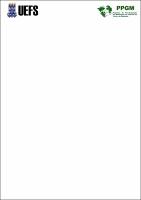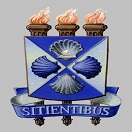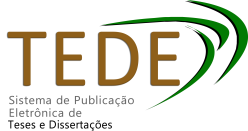| ???jsp.display-item.social.title??? |


|
Please use this identifier to cite or link to this item:
http://tede2.uefs.br:8080/handle/tede/1853Full metadata record
| DC Field | Value | Language |
|---|---|---|
| dc.creator | Fortunato, Udmilla Moura Contes | - |
| dc.creator.Lattes | http://lattes.cnpq.br/7181808394548305 | por |
| dc.contributor.advisor1 | Sano, Edson Eyji | - |
| dc.contributor.advisor1Lattes | http://lattes.cnpq.br/8478741766449896 | por |
| dc.contributor.advisor-co1 | Borges, Elane Fiúza | - |
| dc.contributor.advisor-co1Lattes | http://lattes.cnpq.br/6258771936396884 | por |
| dc.date.accessioned | 2025-06-18T12:17:38Z | - |
| dc.date.issued | 2024-08-02 | - |
| dc.identifier.citation | FORTUNATO, Udmilla Moura Contes. Desempenho de índices de vegetação e atributos texturais na análise espaço-temporal e classificação do uso e cobertura da terra em áreas de enclaves da Caatinga, 2024, 119 f., Dissertação (mestrado) - Programa de Pós-Graduação em Modelagem em Ciência da Terra e do Ambiente, Universidade Estadual de Feira de Santana, Feira de Santana. | por |
| dc.identifier.uri | http://tede2.uefs.br:8080/handle/tede/1853 | - |
| dc.description.resumo | O estudo do desempenho de índices de vegetação e atributos texturais em áreas de enclaves de Caatinga permite uma análise mais precisa das dinâmicas de uso e cobertura da terra. A abordagem espaço-temporal, utilizando dados de sensoriamento remoto, possibilita a identificação de variações na vegetação ao longo do tempo. Nesse viés, analisar o desempenho de índices de vegetação e atributos texturais para discriminação e classificação de classes de uso e cobertura das terras de uma área de enclave da Caatinga, permite avaliar diferentes análises sobre a resposta do bioma às pressões antrópicas e climáticas contribuindo para um mapeamento mais detalhado e eficiente dessas áreas, que historicamente carecem de informações ambientais mais precisas. Para esta pesquisa, desenvolveu-se dois estudos científicos, em formato de artigos, tendo como área de estudo o município de Mucugê, na Chapada Diamantina, Bahia. O primeiro estudo, objetivou avaliar o desempenho de quatro bandas espectrais e três índices de vegetação derivados dos mosaicos mensais do PlanetScope na discriminação de diferentes fitofisionomias de enclaves de Caatinga e culturas agrícolas no município. E, o segundo,analisar o potencial de mosaicos mensais do satélite PlanetScope na classificação de culturas agrícolas temporárias e permanentes. No desenvolvimento dos artigos, utilizaram-se os mosaicos mensais do satélite PlanetScope, os índices de vegetação NDVI, EVI e NGRDI e atributos texturais. Além destes, dados de campo das diferentes fitofisionomias e culturas agrícolas presentes na área de estudo e classificadores supervisionados não-paramétricos, como CART e Random Forest. Os resultados obtidos no primeiro artigo, evidenciaram a sensibilidade dos índices de vegetação e das bandas às áreas de vegetação natural, mesmo durante o período seco. Nas lavouras temporárias,os perfis de IVs exibiram alta amplitude e ciclo de cultivo curto, enquanto nas lavouras permanentes, como o café, houve variações nos perfis devido a diferentes práticas agrícolas. No segundo artigo, os resultados obtidos mostraram alta acurácia global, especialmente durante o período seco, atingindo até 92,03% (AO), com erro estimado de5,08%, bem como a importância de atributos texturais derivados das quatro bandas espectrais disponíveis (R, G, B, NIR) particularmente a média e a variância na classificação. | por |
| dc.description.abstract | The study of the performance of vegetation indices and textural attributes in Caatinga enclave areas allows a more precise analysis of land use and land cover dynamics. The spatiotemporal approach, using remote sensing data, allows the identification of variations in vegetation over time. In this context, analyzing the performance of vegetation indices and textural attributes for the discrimination and classification of land use and land cover classes in an enclave area of the Caatinga allows for the evaluation of different analyses on the biome's response to anthropogenic and climatic pressures, contributing to a more detailed and efficient mapping of these areas, which historically lack more accurate environmental information. For this research, two scientific studies were developed, in the form of articles, with the municipality of Mucugê, in Chapada Diamantina, Bahia, as the study area. The first study aimed to evaluate the performance of four spectral bands and three vegetation indices derived from PlanetScope monthly mosaics in discriminating different phytophysiognomies of Caatinga enclaves and agricultural crops in the municipality. The second study aimed to analyze the potential of monthly mosaics from the PlanetScope satellite in classifying temporary and permanent agricultural crops. In the development of the articles, the monthly mosaics from the PlanetScope satellite, the vegetation indices NDVI, EVI and NGRDI and textural attributes were used. In addition, field data on the different phytophysiognomies and agricultural crops present in the study area and non-parametric supervised classifiers, such as CART and Random Forest, were used. The results obtained in the first article demonstrated the sensitivity of vegetation indices and bands to natural vegetation areas, even during the dry season. In temporary crops, the IV profiles exhibited high amplitude and a short crop cycle, while in permanent crops, such as coffee, there were variations in the profiles due to different agricultural practices. In the second article, the results obtained showed high overall accuracy, especially during the dry period, reaching up to 92.03% (AO), with an estimated error of 5.08%, as well as the importance of textural attributes derived from the four available spectral bands (R, G, B, NIR) particularly the mean and variance in the classification. | eng |
| dc.description.provenance | Submitted by Daniela Costa (dmscosta@uefs.br) on 2025-06-18T12:17:38Z No. of bitstreams: 1 UDMILLA MOURA CONTES FORTUNATO - Dissertação.pdf: 5657966 bytes, checksum: 6608b290512b75cd6fd656adae92b5fe (MD5) | eng |
| dc.description.provenance | Made available in DSpace on 2025-06-18T12:17:38Z (GMT). No. of bitstreams: 1 UDMILLA MOURA CONTES FORTUNATO - Dissertação.pdf: 5657966 bytes, checksum: 6608b290512b75cd6fd656adae92b5fe (MD5) Previous issue date: 2024-08-02 | eng |
| dc.description.sponsorship | Coordenação de Aperfeiçoamento de Pessoal de Nível Superior - CAPES | por |
| dc.format | application/pdf | * |
| dc.thumbnail.url | http://tede2.uefs.br:8080/retrieve/7672/UDMILLA%20MOURA%20CONTES%20FORTUNATO%20-%20Disserta%c3%a7%c3%a3o.pdf.jpg | * |
| dc.language | por | por |
| dc.publisher | Universidade Estadual de Feira de Santana | por |
| dc.publisher.department | DEPARTAMENTO DE CIÊNCIAS EXATAS | por |
| dc.publisher.country | Brasil | por |
| dc.publisher.initials | UEFS | por |
| dc.publisher.program | Mestrado em Modelagem em Ciência da Terra e do Ambiente | por |
| dc.rights | Acesso Aberto | por |
| dc.subject | Sensoriamento remoto | por |
| dc.subject | PlanetScope | por |
| dc.subject | Classificação supervisionada | por |
| dc.subject | Séries temporais | por |
| dc.subject | Métricas de textura | por |
| dc.subject | Remote sensing | eng |
| dc.subject | PlanetScope | eng |
| dc.subject | Supervised classification | eng |
| dc.subject | Time series | eng |
| dc.subject | Texture metrics | eng |
| dc.subject.cnpq | OUTROS::CIENCIAS | por |
| dc.title | Desempenho de índices de vegetação e atributos texturais na análise espaço-temporal e classificação do uso e cobertura da terra em áreas de enclaves da Caatinga | por |
| dc.type | Dissertação | por |
| Appears in Collections: | Coleção UEFS | |
Files in This Item:
| File | Description | Size | Format | |
|---|---|---|---|---|
| UDMILLA MOURA CONTES FORTUNATO - Dissertação.pdf | Fortunato, Udmilla Moura Contes - Dissertação | 5.53 MB | Adobe PDF |  Download/Open Preview |
Items in DSpace are protected by copyright, with all rights reserved, unless otherwise indicated.




